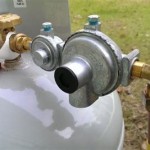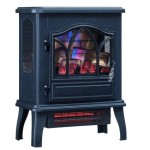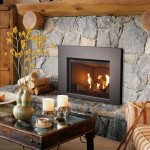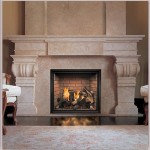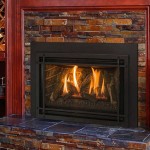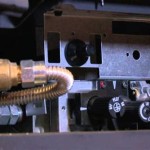Outdoor Steel Fireplaces: A Guide to Design, Functionality, and Maintenance
Outdoor steel fireplaces offer a compelling combination of aesthetic appeal and functional warmth, enhancing the ambiance of patios, decks, and gardens. These fireplaces, constructed primarily from steel, are available in a wide range of styles, from minimalist modern designs to rustic, traditional forms. Understanding the different types of steel used, design considerations, and necessary maintenance is crucial for selecting and enjoying an outdoor steel fireplace for years to come.
The selection of an outdoor steel fireplace involves several key considerations. Its size must be proportional to the surrounding space, ensuring adequate heat distribution without overwhelming the area. The aesthetic design should complement the existing outdoor décor, reflecting the homeowner's personal style. Furthermore, compliance with local regulations regarding outdoor fires is essential prior to installation and use. These factors contribute to a safe and visually pleasing addition to any outdoor living space.
Types of Steel Used in Outdoor Fireplaces
The durability and longevity of an outdoor steel fireplace heavily depend on the type of steel used in its construction. Common types include carbon steel, stainless steel, and weathering steel (often referred to as Corten steel). Each of these materials possesses distinct characteristics that influence its suitability for outdoor use.
Carbon steel, known for its strength and affordability, is often used in the internal structures and less-exposed components of outdoor fireplaces. However, carbon steel is susceptible to rust if not properly coated or treated. Protective finishes, such as powder coating or high-temperature paint, are often applied to enhance its resistance to corrosion. Regular inspections and maintenance of these coatings are necessary to prevent rust formation and extend the lifespan of the fireplace.
Stainless steel offers superior corrosion resistance compared to carbon steel. The presence of chromium in its composition forms a protective layer that inhibits rust formation. Stainless steel fireplaces are available in various grades, with higher grades offering greater resistance to harsh weather conditions and exposure to chlorides (such as those found near coastal areas). While more expensive than carbon steel, stainless steel proves to be a cost-effective choice in the long run due to its durability and minimal maintenance requirements.
Weathering steel, characterized by its distinctive reddish-brown appearance, is designed to develop a controlled layer of surface rust. This rust layer acts as a protective barrier, preventing further corrosion of the underlying steel. Weathering steel is particularly well-suited for modern and industrial-inspired outdoor spaces. While it requires minimal maintenance, it's important to note that weathering steel can stain surrounding surfaces, particularly during its initial weathering process. Properly managing runoff and ensuring adequate drainage can mitigate this potential issue.
Design Considerations for Outdoor Steel Fireplaces
The design of an outdoor steel fireplace should consider both aesthetic appeal and functional requirements. Fireplaces can be freestanding, built-in, or portable, each offering distinct advantages and limitations. The choice depends on the desired level of permanence, available space, and intended use.
Freestanding fireplaces are typically self-contained units that can be placed virtually anywhere in an outdoor space. They are relatively easy to install and offer flexibility in terms of placement and relocation. Built-in fireplaces, on the other hand, are integrated into an existing structure, such as a patio wall or outdoor kitchen. They provide a more permanent and custom look, but require careful planning and professional installation. Portable fireplaces offer the greatest flexibility, allowing users to easily move the fireplace as needed. These are often smaller in size and designed for occasional use.
Beyond the basic structure, design elements such as the firebox shape, chimney style, and decorative accents contribute to the overall aesthetic. Fireboxes can be open or enclosed with glass doors, offering different levels of heat control and safety. Chimneys can be simple flues or elaborate structures that enhance the visual impact. Decorative accents, such as stone cladding or metalwork, can further personalize the fireplace and complement the surrounding landscape.
Safety is a paramount design consideration. Fireplaces should be located away from flammable materials, such as overhanging trees and dry foliage. Adequate ventilation is essential to ensure proper combustion and prevent the buildup of harmful gases. Spark screens are highly recommended to contain embers and prevent wildfires. Furthermore, the design should incorporate features that facilitate easy cleaning and maintenance, such as removable ash pans and access panels.
Maintenance and Care of Outdoor Steel Fireplaces
Regular maintenance is crucial for preserving the appearance and extending the lifespan of an outdoor steel fireplace. The frequency and type of maintenance depend on the type of steel used, the climate, and the frequency of use. Neglecting maintenance can lead to rust formation, structural damage, and reduced performance.
For carbon steel fireplaces, regular cleaning is essential to remove soot, ash, and other debris that can accelerate corrosion. Applying a protective coating of high-temperature paint or sealant can help to prevent rust formation. Any scratches or chips in the existing coating should be promptly repaired to prevent moisture from penetrating the steel. During the off-season, the fireplace should be covered with a waterproof tarp to protect it from the elements.
Stainless steel fireplaces require less maintenance than carbon steel fireplaces, but still benefit from routine cleaning. A mild soap and water solution can be used to remove dirt and grime. Stubborn stains can be removed with a stainless steel cleaner. Avoid using abrasive cleaners or scouring pads, as these can scratch the surface. Periodically inspecting the fireplace for signs of corrosion, particularly in areas exposed to salt spray or other corrosive elements, is recommended.
Weathering steel fireplaces require minimal maintenance. The rust layer that forms on the surface is self-protecting and does not require painting or sealing. However, it is important to ensure that the fireplace is properly drained to prevent water from pooling and accelerating corrosion. Areas where the steel is in direct contact with concrete or other porous materials should be inspected regularly for signs of staining.
Regardless of the type of steel used, regular chimney cleaning is essential to prevent the buildup of creosote, a flammable substance that can cause chimney fires. Professional chimney sweeps can provide this service. Additionally, regularly inspecting and maintaining the firebox, spark screen, and other components will help to ensure safe and efficient operation.

Weathering Steel Outdoor Fireplace With Grill Terrain

Weathering Steel Planed Outdoor Fireplace Terrain

Weathering Steel Outdoor Fireplace With Grill Terrain
Outdoor Steel Fireplace With Cooking Grill Costco

9 Outdoor Fireplace Design Ideas The Family Handyman

Mainstays 45 Inch Outdoor Steel Fireplace With Chimney Com

8 Best Chiminea Fire Pits For Your Backyard Clay Steel And More

Martello Outdoor Steel Fireplace Flare Fires New Zealand Backyard Landscaping Designs

Rb73 Makes Corten Steel Outdoor Fireplaces With Glass Enclosures

Planed Weathering Steel Chiminea Terrain Modern Outdoor Fireplace Designs Backyard
Related Posts

